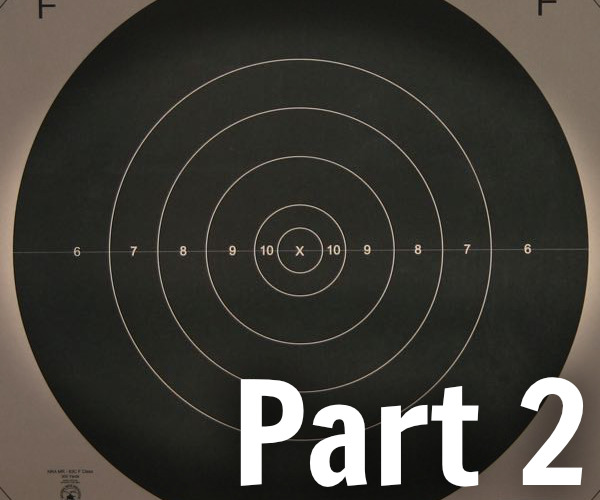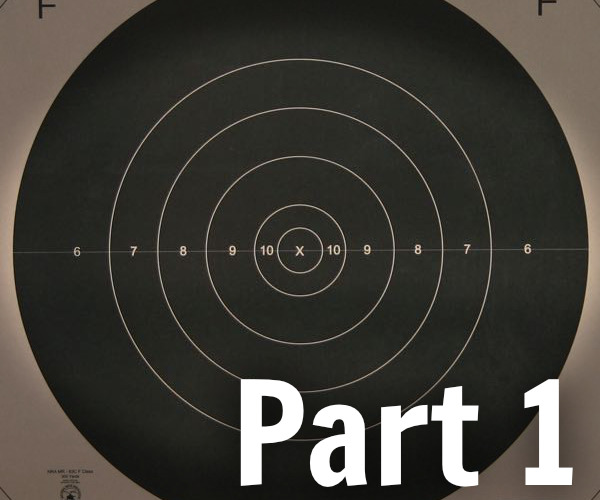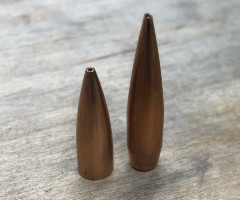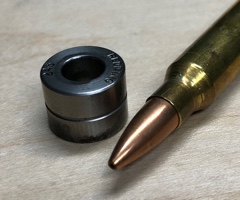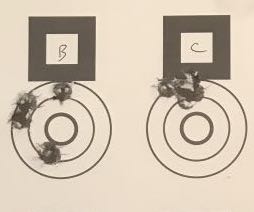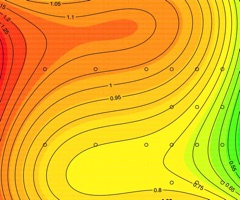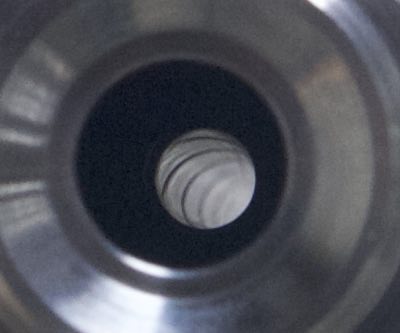Jump Sensitivity Factor - A New (Old) Way to Evaluate Bullets
By Damon Cali
Posted on May 02, 2019 at 10:51 AM
Shooters tend to look at bullets with a bit of mystery. Some seem to work well, while others don't. Some shoot well at short range, while others excel at longer range. But why? And can we tell ahead of time which bullets are more suited to the application we care about.
One longstanding method is to compare ballistic coefficients. Bullets with higher BCs have lower drag and will therefore be pushed around less by the wind. But have you ever noticed that the higher BC bullets tend to be longer and heavier than lower BC bullets? There's a reason for that.
And have you ever seen a short range benchrest shooter using high BC bullets? I haven't. Clearly, a high BC is not always best. What's going on here, and how can we quantify it?
Drag vs Precision, Pick Your Poison
Many studies both theoretical and practical over the last century or so have shown us what makes for a low drag bullet - a long nose, a boattail of a certain angle, a specific meplat size and profile - these things all combine to favor long, sleek bullets when drag is to be minimized.
But what about precision? Are long, sleek, low drag bullets as accurate (precise, technically) as short, stubby bullets? The answer to that question is a resounding "no".
Before we get too far, I want to clearly define accuracy vs precision. Precision is the ability of a rifle to shoot small groups. Accuracy is the ability of a rifle center its group on the point of aim. It is possible to have a very accurate, but also very imprecise rifle (the center of a very large group would be exactly at the center of the target). It is also possible to have a very precise, but very inaccurate rifle (a tiny group would be way off the center of the target). In common usage, when most shooters say "my rifle is very accurate", what they really mean is "my rifle is very precise".
For the purpose of this article, I'll break precision down into "inherent precision" and "ballistic precision". Inherent precision is the ability of the rifle to shoot small groups in a no wind situation. Ballistic precision is the ability of a perfect rifle (group size is zero) to shoot small groups in a varying wind and/or with varying muzzle velocity. Total precision would be a combination of the two.
Total precision is what we're after. - we can always adjust the sights to gain accuracy. At long range, wind becomes a dominating factor. If your wind calls aren't perfect, you'll lose so much ballistic precision that you'll have a lot of misses even with the most inherently precise rifle. We counter this with better ballistics, and we're willing to give up a little inherent precision in order to get more ballistic precision, thereby optimizing total precision. At short range, it's the opposite situation - we care much less about ballistic precision, and much more about inherent precision because the impact of the wind is small.
In a nutshell, at any given range, there is an optimum combination of ballistic performance and group size.
Aerodynamic Jump is the Enemy of Precision
Now, I'm going to introduce an advanced ballistic concept: aerodynamic jump. Most shooters associate the term with a vertical deflection due to a cross wind, but that is only one manifestation of the phenomenon. It is also a major source of bullet dispersion - a lack of precision.
Aerodynamic jump, put simply, occurs when a bullet leaves the muzzle and immediately tips to the side (or up or down). Because of that initial yaw angle, the bullet will "jump" off at an angle from the center line of the bore. There are various ways to cause this initial tipping - one is a cross wind. Another would be an asymmetric muzzle device. A third, and the one we care about here is dynamic bullet unbalance or in-bore tipping. When an unbalanced bullet leaves the muzzle, it "wants" to rotate about an axis that is at an angle to its geometric axis, thereby tipping as soon as it leaves the constraint of the bore. That tipping creates dispersion in a random direction, because the direction of the unbalance is unpredictable. The result is that instead of every bullet going through the same hole, we get a group. (Note: there are other sources of bullet dispersion that we are ignoring here - they're not relevant to this discussion).
So how much does aerodynamic jump impact bullet dispersion, and can we predict it? The answers are "it depends", and "yes". The factors that impact the magnitude of the aerodynamic jump are the bullet's geometry, weight distribution, and spin rate. The details are not easy to calculate or measure, but it can be done. The bottom line is that long bullets spun quickly are more sensitive to aerodynamic jump - sometimes significantly so.
This effect has been known for quite some time, but until I read a paper written by Bob McCoy, I hadn't thought much about it. Back in 1985, McCoy was tasked with evaluating the dispersion of 5.56mm bullets, and he combined all of the factors that impact aerodynamic jump into a single number that he called a "sensitivity factor". The higher the number, the more sensitive the bullet/twist combination is. (A low jump sensitivity factor is a good thing).
For example, a 62 grain M855 Ball round fired from a 7" twist has a jump sensitivity factor of 0.17, while the longer M856 tracer round fired from the same barrel has a jump sensitivity factor of 0.33 - nearly double. The shorter 55 grain M193 fired from a slower 12" twist weighed in at 0.10. McCoy's conclusion based on these numbers was that jackets for the M855 bullets had to be manufactured with tolerances roughly half the size of the M193 in order to achieve the same precision (group size).
At the end of the day, longer bullets spun faster will have higher jump sensitivity.
Twist Matters
You might think that comparing bullets at different twist rates is unfair. But it's not. You have to spin longer bullets faster to stabilize them. So shorter bullets not only have the advantage of being more compact, but also they can be spun more slowly. This is why benchrest shooters using a .30 BR might shoot 112 grain bullets through a 18" twist barrel. The combination of a short for caliber bullet and a very slow twist makes for very small groups.
But that falls apart at longer ranges. Those short stubby .30s have poor BCs, and the ability to hit your target drops off quickly with range. This is why 600 and 1000 yard shooters use longer, higher BC bullets in spite of them being less precise. At mid and long range, ballistics are more important than precision.
Context
Most of us have a good feel for what a good BC looks like. Some of us can rattle them off from memory. But what does a "good" jump sensitivity look like? To make that more clear, I wrote some software that calculates the jump sensitivity factor for a given bullet geometry and set of conditions. I ran a few cases to show some examples so that you can get an idea for what a good or bad number looks like. One caveat is that these calculations are approximate. Getting precise jump sensitivity factors requires a lot of testing, measurement and calculation. However, I believe these numbers are good enough to show the trends and provide context.
Jump Sensitivity Factor Examples (Mach 2.5 Muzzle Velocity)
| Bullet | Jump Sensitivity Sg = 1.0 |
Jump Sensitivity Sg = 1.5 |
BC (G7) |
|---|---|---|---|
| Berger .308 Juggernaut - 185gr. | .122 | .151 | .284 |
| Berger .243 Flat Base Target 68gr. | .066 | .081 | .131 |
| Sierra .284 MatchKing 180gr. | .163 | .199 | .337 |
There are a few things to point out about the above data. One is that as Sg increases, you also increase jump sensitivity. This is one reason that using a faster than necessary twist is not a good idea. Also, you can see a trend here. The short Berger Flat Base 68 has a very low jump sensitivity factor, where the long, sleek Sierra 180 MatchKing has a relatively high sensitivity factor. The Juggernaut is a balanced long range bullet design with a reputation for accuracy and moderate ballistic performance. As you might expect, it's jump sensitivity falls in between the two, although it's closer to that of the MatchKing. This isn't surprising, as the MatchKing and Juggernauts are both long range bullets.
But look at the BCs - the MatchKing's BC is more than double the BC of the Berger Flat Base, and has a substantial advantage over the Juggernaut.
This is why you will see lots of short range benchrest shooters using short 6mm bullets, and why F Open shooters use something closer to the longer 7mms. Many F Class shooters refer to the Juggernaut as an "easy button" - they're known for being easy to tune and accurate, and are often recommended to new F TR shooters. We can now see why - they have very good jump sensitivity factors, given their intended purpose.
Practical Takeaway
It's important to keep in mind that there are other factors that impact a bullet's potential precision. Jump sensitivity is still a useful measure, because aerodynamic jump is generally the largest one. But it doesn't address everything.
You can use the rule of thumb that shorter is better - for inherent precision. Unless manufacturers start publishing jump sensitivity factors, that's the best we can really do. For ballistic performance, you can just compare BCs. (If you can't tell, I think they should publish these numbers).
Twist is also an overlooked factor. The trend in some shooting circles seems to be towards higher twist rates, which is good for ballistics - to a point. It's my opinion that many shooters are using twist rates that are too fast, giving up precision for no benefit. The old rule of using the slowest twist that gives you acceptable results still applies. If your Sg is more than around 1.5, your twist rate is faster than it needs to be and your group size is suffering.
The bottom line is that when you choose a bullet for a discipline like F Class, it is not always wise to simply pick the highest BC bullet. There may be a bullet with a slightly lower BC that performs better because its allows more precision and a slower twist. There is such a thing as too much BC.
Damon Cali is the creator of the Bison Ballistics website and a high power rifle shooter currently living in Nebraska.
The Bison Ballistics Email List
Sign up for occasional email updates.
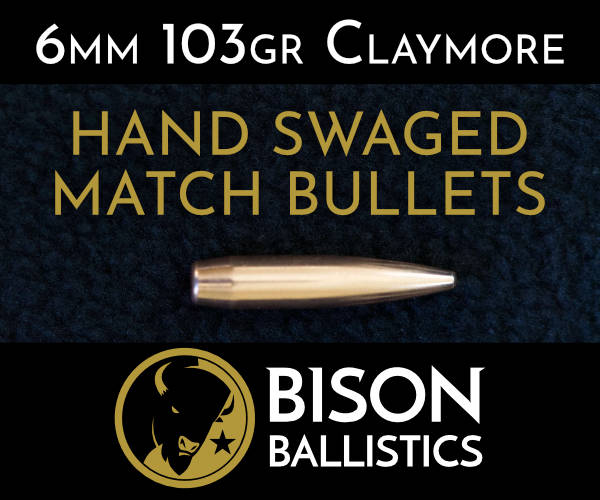
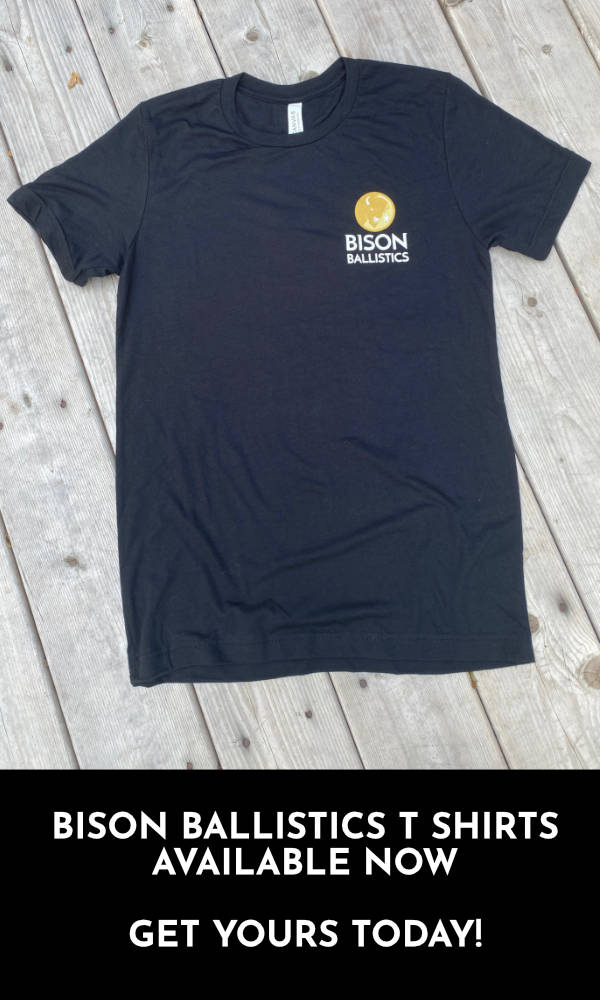
Want to Support the Site?
If you enjoy the articles, downloads, and calculators on the Bison Ballistics website, you can help support it by using the links below when you shop for shooting gear. If you click one of these links before you buy, we get a small commission while you pay nothing extra. It's a simple way to show your support at no cost to you.
